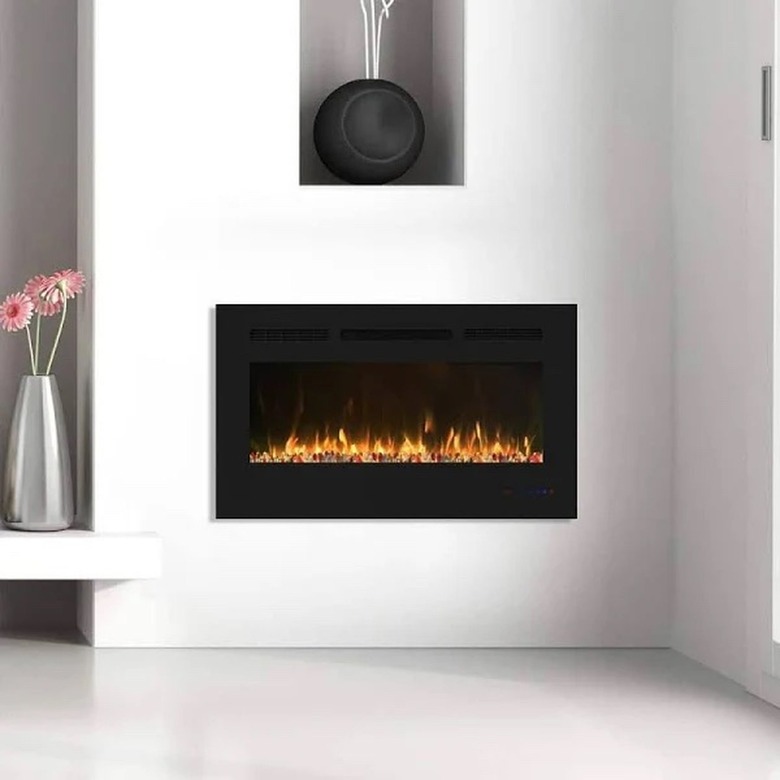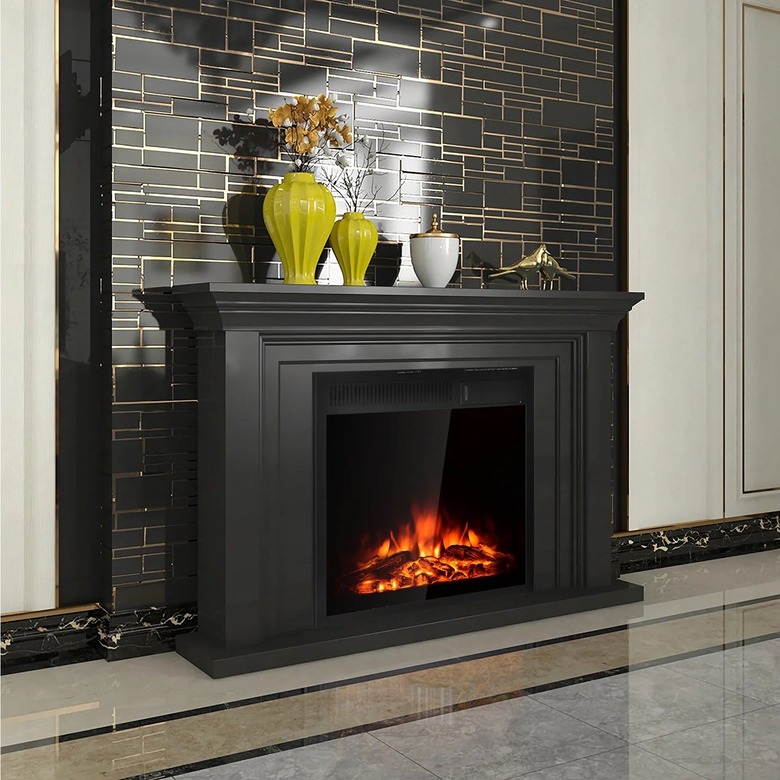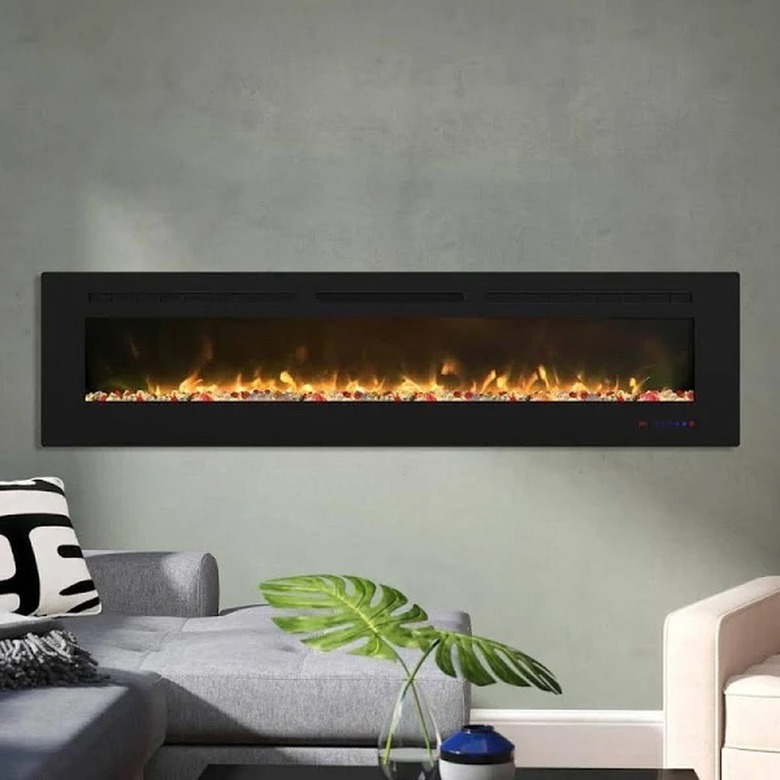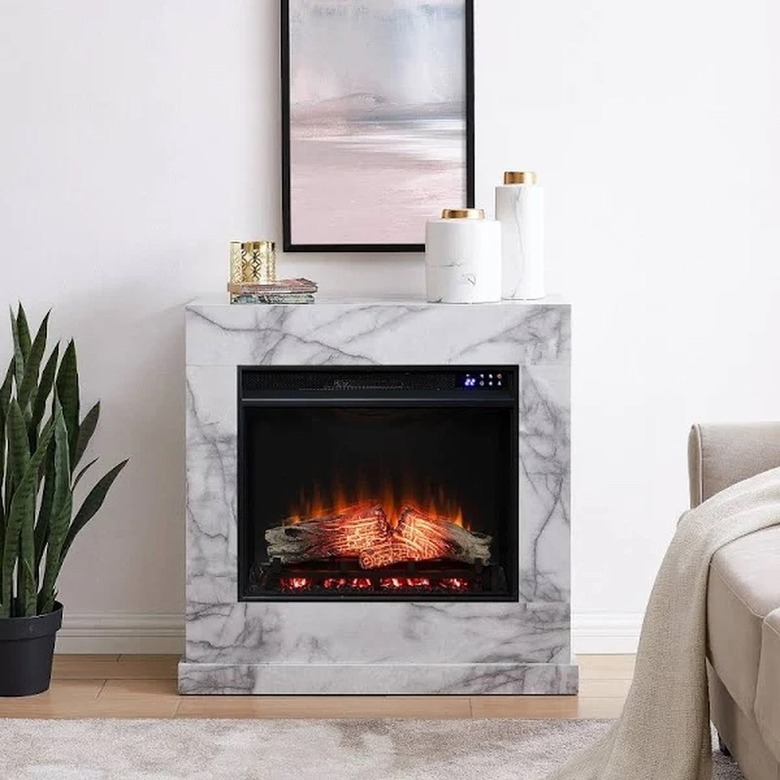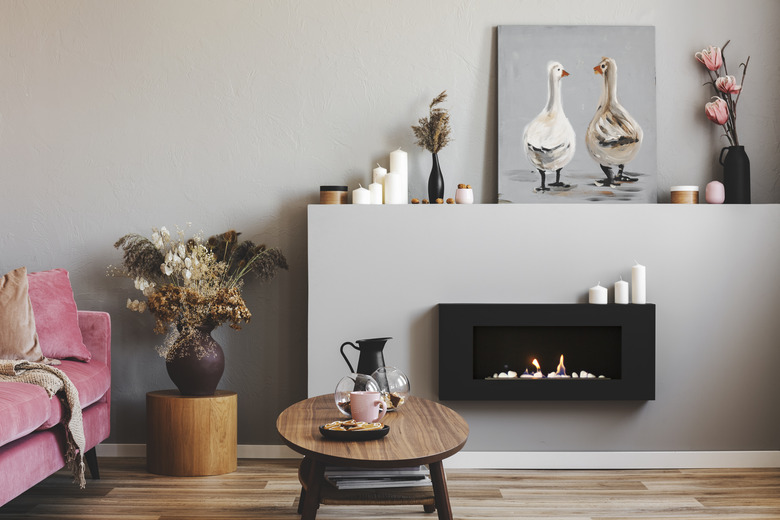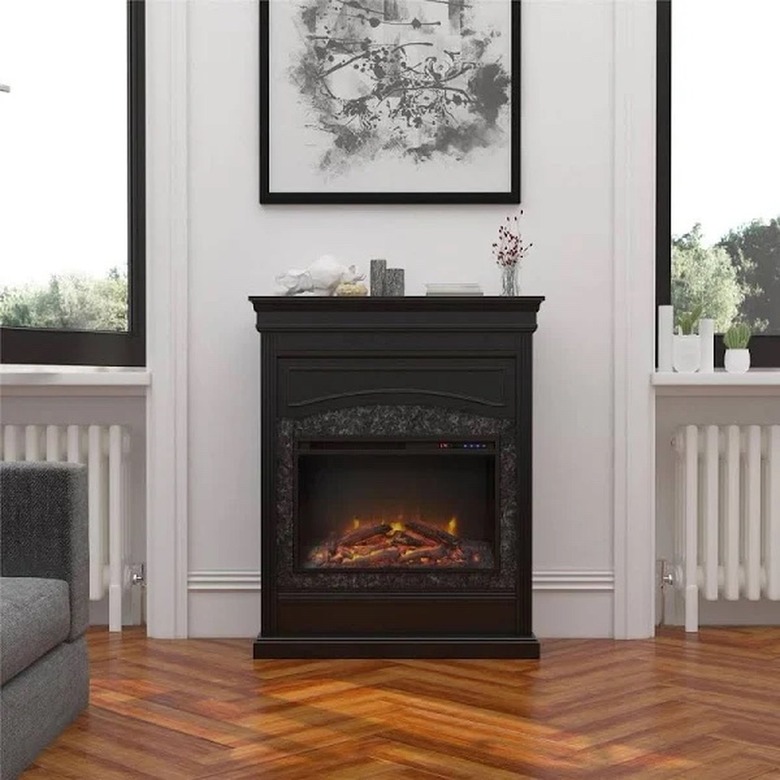Do Electric Fireplaces Give Off Heat? Here's What To Know Before You Buy
We may receive a commission on purchases made from links.
Do electric fireplaces give off heat? If you're planning to install a new fireplace or upgrade an existing fireplace, it's a question you might have before you decide what type to buy. While most electric fireplaces have the option to give off heat, the way the fireplace produces it is a little different than with wood-burning or gas fireplaces. Understanding how the types of fireplaces compare can help you decide if electric fireplaces will provide the amount of heat you want.
Do Electric Fireplaces Give Off Heat?
Do Electric Fireplaces Give Off Heat?
So, do electric fireplaces actually give off heat? In most cases, the answer is yes. Most electric fireplaces have the option to operate with or without heat. They typically have different settings allowing you to use the fireplace with flames only for ambiance, heat only, or flames and heat together for a cozy glow and a warm room. Many electric fireplaces also have different heat settings, so you can adjust the temperature based on your needs.
How Electric Fireplaces Create Heat
How Electric Fireplaces Create Heat
An electric fireplace typically uses a heating element to produce heat through convection. Similar to an electric space heater, the heating element warms the air in the room. The heating element is often in the form of heating coils and is separate from the flames — usually located at the top of the unit. It then uses a fan to push the heated air out into the room.
You can also get infrared fireplaces, which use infrared rays to heat. Instead of heating the air like a unit with heating coils, the infrared unit heats people and objects. As the rays hit objects or people, those things absorb the rays and feel warmer. Because you don't have to wait for the air to heat up around you, the infrared fireplace often makes you feel warmer quicker.
How Much Heat Is Produced?
How Much Heat Is Produced?
Most electric fireplaces use 120 volts of power, although some models are available to run on 240 volts. For a 120-volt fireplace, the maximum heat output is 5,000 Btu but some will produce lower heat output. You can expect a unit of that size to heat a room that's about 400 square feet, which might include a spacious living room or a small finished basement. More powerful models can heat a space up to 1,000 square feet.
Tip
Btu stands for British thermal unit, which is a heat measurement unit. In general, for fireplaces the higher the Btu, the warmer your room will be.
How Electric Fireplaces Compare to Gas & Wood
How Electric Fireplaces Compare to Gas & Wood
Do electric fireplaces give off heat with the same gusto as wood and gas fireplaces? While an electric unit is a functional heat source for a small area, the Btu rating is usually the lowest for an electric fireplace. The Btu for a gas fireplace typically range anywhere from 8,000 to 60,000 Btu. Wood-burning fireplaces produce 20,000 to 80,000 Btu, but traditional fireplaces aren't very efficient, with only 15 to 30 percent of that energy converting to usable room heat. However, you can get higher-efficiency wood-burning fireplaces with 75 percent or higher efficiency, which heat your room better.
Electric fireplaces are often touted as the most energy efficient because electricity converts directly to heat with virtually no loss of energy. However, the claim of high energy efficiency is misleading because it ignores the fact that generating electricity and delivering it to your house is a highly inefficient process. When electricity comes from conventional power plants, it represents an energy waste of about 66 percent by the time it gets to your house. That arguably makes any electric heating appliance no more than 34 percent energy efficient, which is much lower than a gas fireplace or even many wood-burning fireplace models.
Gas fireplaces typically heat a larger space than other types of fireplaces because they have the highest Btu, and they're fairly energy efficient. On the small end, a gas fireplace produces enough heat for a 500-square-foot room. Large models can produce enough heat for a room from 1,000 to 2,200 square feet or more. Sizing a gas fireplace is especially important to avoid overheating the space.
The Pros of Electric Fireplaces
The Pros of Electric Fireplaces
Electric fireplaces can be worth buying if you understand how they work and their limitations. They can also be a good alternative if your home doesn't have a wood-burning fireplace or if you don't have natural gas running to your home. Exploring the pros and cons of electric fireplaces can help you decide if they're the right option for you.
Some of the pros of electric fireplaces include:
Easy Installation
Electric fireplaces plug into regular outlets, so the setup is simple. Wood-burning and gas fireplaces require proper venting, and a gas fireplace requires a properly run gas line.
Fast Heat
Most electric fireplaces turn on with the flip of a switch, so you get heat on demand with no hassle. You can feel the warmth immediately without spending lots of time preparing wood and starting a fire. However, gas fireplaces tend to heat up the fastest and heat up the room faster than other types.
Consistent Heat
The electric heater provides relatively consistent heat for your space. Wood-burning fireplaces can be inconsistent as the fire dies down. Wood fireplaces also require you to continue adding more wood, whereas an electric fireplace heats as long as you have it on with no additional work on your part.
Adjustable Heat
You can usually choose different heat settings on an electric fireplace. The temperature is more difficult to control on a wood-burning fireplace. It's common for an electric fireplace to come with a remote control for easier adjustments.
Clean Operation
Unlike gas and wood-burning fireplaces, electric models offer a clean source of heat with no emissions in or around your home. They don't add pollutants to your indoor air, and you don't have to clean out the fireplace after using it.
No Carbon Monoxide Risks
Since an electric model uses a heating element instead of combustion to produce heat, it doesn't produce carbon monoxide like wood-burning and gas fireplaces can. This reduces the risk of carbon monoxide leaks in your home.
Cool Glass
Since the heat doesn't come from the flame area, the glass on an electric fireplace typically stays cool. This can make it safer for kids who might be drawn in by the flames. However, the area where the heat blows out of the fireplace can be hot, so you still need to use caution. The heat usually comes out higher on the unit.
A Variety of Options
Electric fireplaces are available in a variety of types and designs. You can get an electric fireplace insert to go inside an existing fireplace. A wall-mounted electric fireplace offers a modern look. A TV stand with an integrated electric fireplace helps conserve space in a smaller living room.
Cons of Electric Fireplaces
Cons of Electric Fireplaces
Like any other item you consider for your home, there are some downsides to electric fireplaces. The cons of choosing an electric fireplace include:
No Heat Without Power
During a power outage, you can't use your electric fireplace heater to stay warm. You can burn wood in a wood-burning fireplace or light a gas fireplace without electricity, which can keep you warm and give you a light source in a blackout if you have those types of fireplaces.
Limited Heating
Electric fireplaces often don't produce as much heat as other fireplaces, especially gas fireplaces. They can provide some supplemental heat in the room where they're installed, but you can expect it to be similar to a portable space heater.
Less Realistic
If you're hoping for the look of real flames, you likely won't get it with an electric unit. They typically use LED lights to create a flame effect. Homeowners often prefer gas fireplaces for a more realistic wood-flame look.
Need for a Dedicated Circuit
Like a space heater, electric fireplaces can draw a lot of power, typically up to 1,500 watts, but this can be higher. This can overload a household electrical circuit, especially one that's already serving other appliances. In some cases, it's best to plug a fireplace into a dedicated circuit (preferably 20 amp) that is not used to power other devices.
Less Ambiance
Some people like the smell of a wood fire or the crackling sounds you hear while burning logs in a fireplace. An electric fireplace eliminates those little touches that add to the coziness.
Tips for Choosing Electric Fireplaces
Tips for Choosing Electric Fireplaces
Deciding if an electric fireplace is right for you comes down to your preferences and needs. If you want a powerful heat source for a larger space, an electric fireplace likely won't live up to your expectations. If you want a little supplemental heat with a convenient, low-maintenance fireplace, an electric model could be a solid choice.
When choosing an electric fireplace, keep these things in mind:
- Compare the heat output. Ensure the electric fireplace you choose is large enough to heat the desired space. Find out the square footage the fireplace will heat and compare it to the square footage of your room.
- Check your power source. Most electric fireplaces plug into regular outlets using 120 volts, but some require 240 volts. Ensure you have the right type of outlet and that your current electrical system can handle the added draw of the electric fireplace.
- Consider the type of electric fireplace you want. Inserts are easy if you already have a fireplace. Freestanding units and media centers are easy to move if you want to rearrange your furniture.
- Match the style of your decor. Electric fireplaces come in a range of styles, from traditional to modern. Choose a model that coordinates with the rest of your room.
- Measure your space. No matter what type of electric fireplace you want, take accurate measurements of the area where you plan to put it to ensure it fits properly. Make sure there's plenty of room for the heated air or infrared rays to move through the room.
- Check the flames. While it's difficult to find realistic flames in an electric fireplace, the quality of the flames can vary significantly. Seeing the fireplace in action before buying it lets you see how good the flames look.
- Compare the features. Many electric fireplaces include remotes, but some offer additional features, such as timers, touch-screen controls, quiet operation, and flame color controls. Check on the number of flame settings and heat settings for each option to see how much flexibility the unit has.
- Verify the safety features. An auto shutoff to prevent overheating is an important safety feature for electric fireplaces. Some freestanding units also cut off the power if they tip over.

